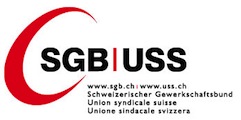Publications des institutions partenaires
Talent and/or Popularity: What Does It Take to Be a Superstar?
We show that both talent and popularity significantly contribute to stars' market values in German soccer. The talent-versus-popularity controversy on the sources of stardom goes back to Rosen (1981) and Adler (1985). All attempts to resolve the controversy empirically face the difficulty of accurately identifying talent. In professional sports, rank-order tournaments help in...
Institution partenaire
English / 01/01/2012
Impact of Brand Equity on Customer Acquisition, Retention, and Profit Margin
This paper examines the relationship between brand equity and customer acquisition, retention, and profit margin, the key components of customer lifetime value (CLV). We examine a unique database from the U.S. automobile market that combines 10 years of acquisition rate, retention rate, and customer profitability data with measures of brand equity from Young & Rubicam’s Brand...
Institution partenaire
English / 01/01/2012
Economic crises and the elderly?
Economic crises in the last decades have swept elderly workers more than younger workers out of employment. But now the tide is turning. In affluent societies, elderly workers will have more opportunities of being employed in meaningful and well-paid jobs than ever before. On account of demographic changes, fewer (younger) workers will be around, and most of the reasons that in the...
Institution partenaire
English / 01/01/2012
Finding all pure-strategy equilibria in games with continuous strategies
Static and dynamic games are important tools for the analysis of strategic interactions among economic agents and have found many applications in economics. In many games, equilibria can be described as solutions of polynomial equations. In this paper, we describe state-of-the-art techniques for finding all solutions of polynomial systems of equations, and illustrate these techniques...
Institution partenaire
English / 01/01/2012
Socially optimal north-south capital transfer and technology diffusion
We study North–South capital transfer and the diffusion of embodied technologies within a framework of intertemporal global welfare maximization. We show saddle path stability and characterize the steady state. We then examine the transition path by running numerical experiments based on realistic data. As a result, technology diffusion will succeed if the absorptive capacity is...
Institution partenaire
English / 01/01/2012
Optimal global carbon management with ocean sequestration
We investigate the socially optimal intervention in the global carbon cycle. Limiting factors are (i) increasing atmospheric carbon concentration due to fossil fuel-related carbon emissions, and (ii) the inertia of the global carbon cycle itself. Accordingly, we explicitly include the largest non-atmospheric carbon reservoir, the ocean, to achieve a better representation of the...
Institution partenaire
English / 01/01/2012
Stop tying pay to performance. The evidence is overwhelming: It doesn’t work
Institution partenaire
English / 01/01/2012
Optimal rules for patent races
There are two important rules to patent races: minimal accomplishment necessary to receive the patent and the allocation of the innovation benefits. We study the optimal combination of these rules. A planner, who cannot distinguish between competing firms in a multistage innovation race, chooses the patent rules by maximizing either consumer or social surplus. We show that efficiency...
Institution partenaire
English / 01/01/2012
A test of the extreme value type I assumption in the bus engine replacement model
This note tests the assumption of dynamic discrete choice models that underlying utility shocks have an extreme value type I distribution. We find that extreme value type I shocks cannot be rejected in most specifications of the Rust (1987) bus engine replacement model.
Institution partenaire
English / 01/01/2012
Financial innovation and asset price volatility
We compare asset prices in an overlapping generations model for incomplete and complete markets. Individuals within a generational cohort have heterogeneous beliefs about future states of the economy and thus would like to make bets against each other. In the incomplete-markets economy, agents cannot make such bets. Asset price volatility is very small. The situation changes...
Institution partenaire
English / 01/01/2012
One for sure or maybe three - Empirical evidence for overtime play from a comparison of Swiss ice hockey and the NHL
In order to avoid too many tied games after playing the five-minute overtime period, the National Hockey League (NHL) introduced two rule changes in the 1999-2000 season. First, a team that loses in overtime receives one point instead of zero points. Second, the number of skaters in overtime is reduced from five to four. The theoretical literature analyzing these rule changes...
Institution partenaire
English / 01/01/2012
Salary cap regulation in professional team sports
This paper analyzes the effects of a percentage-of-revenue salary cap in a team sports league with win-maximizing clubs and flexible talent supply. It shows that a percentage-of-revenue cap produces a more balanced league and decreases aggregate salary payments. Taking into account the idiosyncrasies of European football, our paper further highlights the potential conflicts between...
Institution partenaire
English / 01/01/2012
Does online community participation foster risky financial behavior?
Although consumers increasingly use online communities for various activities, little is known about how participation in them affects people's decision-making strategies. Through a series of field and laboratory studies, the authors demonstrate that participation in an online community increases people's risk-seeking tendencies in their financial decisions and behaviors....
Institution partenaire
English / 01/01/2012
Consolidated financial statements: an introduction
This textbook focuses on the theoretical and practical treatment of the challenges of consolidated financial statements, with an integrated and logical approach and careful attention to methodical and educational requirements. Applying current accounting theory, the most relevant topics of consolidation are demonstrated and illustrated with examples. It includes an overview of the...
Institution partenaire
English / 01/01/2012
Discretionary reporting at initial public offerings
Institution partenaire
English / 01/01/2012
Analysis of a terror network from a system dynamics perspective
Terrorism is a complex problem and therefore simple solutions focusing just on one aspect are destined to fail. We have to capture terrorism in its entirety and system dynamics offers various tools to support us. We developed a semi-quantitative system dynamics approach aiming to characterize relationships between different variables and their impact on the system as a whole. The...
Institution partenaire
English / 01/01/2012
How managers can deal with complex issues: a semi-quantitative analysis method of causal loop diagrams based on matrices
The increasing complexity of the modern world creates both higher risks and new interdependencies in the socioeconomic environment. To cope with these challenges powerful new tools must be applied to find sustainable solutions. System dynamics is a field that offers potential assistance in dealing with complex issues. However, managers and politicians often lack the knowledge and...
Institution partenaire
English / 01/01/2012
Leadership Ethics and Organizational Change: Sketching the Field
Institution partenaire
English / 01/01/2012
Pages
Le portail de l'information économique suisse
© 2016 Infonet Economy












